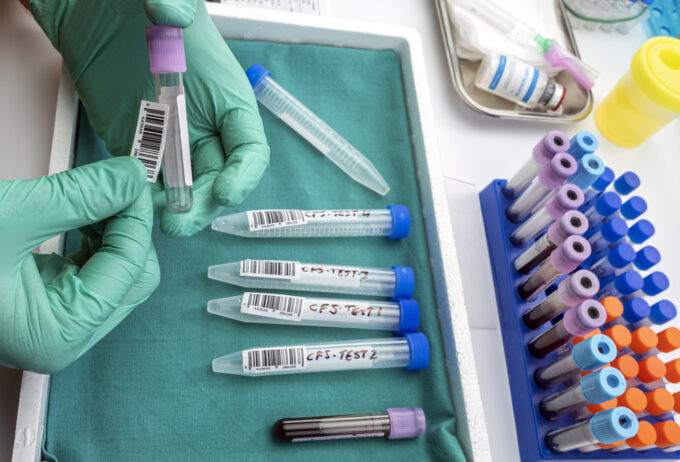Increasing antibiotic resistance: sensors for super germs
Antibiotic-resistant bacteria sometimes cause life-threatening infections that are almost impossible to treat with existing medication. This makes common illnesses such as urinary tract infections or skin wounds a medical risk. Empa researchers are therefore working on sensors that quickly identify resistant germs and recommend efficient treatment.

The spread of antibiotic-resistant superbugs is plunging medical care worldwide into a crisis. It is estimated that the number of victims of multi-resistant bacteria in 2028 will be as high as before the discovery of penicillin 100 years earlier, with costs running into the billions. The World Health Organization (WHO) calls the "silent pandemic" one of the greatest threats to global health.
The development of resistance is fueled when antibiotics are used prematurely without first identifying the underlying pathogen. This is not entirely incomprehensible, because: Valuable time is lost during diagnosis using time-consuming methods, so that in emergency situations, for example, it is often decided not to wait for the relevant laboratory results. The possible consequence: treatment remains ineffective and the risk of further resistance development increases. Empa researchers are therefore working together with clinical partners on innovative diagnostic tools such as sensors that can detect resistant pathogens more quickly and allow customized treatment in good time.
Sensor lights up in case of pneumonia
Multidrug-resistant bacteria are particularly common in hospital-acquired infections such as pneumonia. One pathogen that can cause this type of pneumonia is Klebsiella pneumoniae. Empa researcher Giorgia Giovannini from the "Biomimetic Membranes and Textiles" laboratory, together with the Cantonal Hospital of St. Gallen, is currently developing a sensor for this super germ that emits fluorescent light when a Klebsiella-infection is present. The sensor reacts to the enzyme urease, which is produced by the bacteria. In the "Doorstep" project, the researchers are working on polymer particles that surround a fluorescent dye. If the bacterial urease decomposes the polymer, the dye can develop its luminosity. The diagnostic method should work with a throat swab or a sputum sample. This would make it possible to identify the pathogens causing pneumonia within a few hours instead of several days.
Plaster warns of wound germs
Infected wounds are also an important area of application for the rapid and precise diagnosis of resistant pathogens. They not only cause pain and tissue damage - they are also a breeding ground for antibiotic-resistant superbugs. A team led by Empa researchers Luciano Boesel and Giorgia Giovannini is now starting a project together with the Cantonal Hospital of St. Gallen in which they want to develop a multi-sensor dressing for wounds. It is based on silica nanoparticles that are embedded in a resistant hydrogel made from biocompatible polymers. The sensor technology is to be integrated directly into the dressing material. The nanoparticles are functionalized with substances that can specifically indicate the excretion of certain bacteria.
The sensors are designed to detect particularly dreaded pathogens such as Staphylococcus aureus and indicate a change in the acid-base balance in the wound. In addition, the risk of antibiotic resistance should quickly become visible. As highly pathogenic wound bacteria have the enzyme beta-lactamase, which they use to inactivate certain antibiotics, the sensor contains dyes that are broken down by this enzyme. If resistant bacteria in the wound produce the enzyme, the sensor gives a clear warning by glowing under UV light. In everyday clinical practice, the wound sensor enables rapid, cost-effective diagnosis and personalized wound treatment. The project was made possible thanks to generous donations from the Philipp and Henny Bender Foundation, the Blumenau-Léonie Hartmann Foundation, the Hans Groeber Foundation and the Räschle Foundation.
Fished out of the urine
Another unpleasant representative from the bacterial kingdom is Pseudomonas aeruginosa. The rod-shaped bacterium can cause various diseases, including infections of the urinary tract, for example via urinary catheters during a hospital stay. And these pathogens are also often resistant to various antibiotics. A team of researchers from Empa and ETH Zurich has therefore developed a method using magnetic nanoparticles that detects the bacteria quickly and precisely. As the magnetic particles are coupled to protein building blocks that are exclusively associated with Pseudomonas aeruginosa the bacterial cells can finally be specifically "fished" out of the urine using a magnetic field.
In the next step, the sensitivity of the pathogens to various antibiotics is analyzed using a chemiluminescence method. If there are resistant bacteria in the test tube, the sample emits light. However, if the germs can be killed with antibiotics, it remains dark. "All in all, the resistance test takes around 30 minutes - compared to several days for a classic cultivation of bacterial cultures," says Qun Ren, group leader at Empa's "Biointerfaces" laboratory in St. Gallen. This makes it possible to determine the appropriate antibiotic therapy within a short time - and thus prevent the development of further resistance.
Source: Empa









